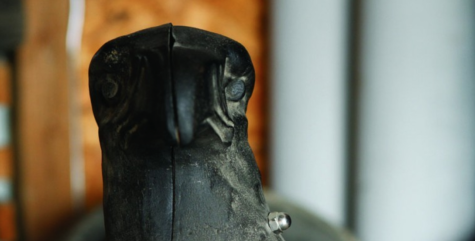Flight of the Eagles
A brief history on how the iconic statues came to be
September 10, 2021
The eagles of Ashland University are a true staple to the campus, but many students and faculty do not know that each of them have a backstory and reasoning. The eagle statues initially belonged to the Case Implement Tractor Company, but in the winter of 1940, the first eagle statue, aptly named Louie The First, came to Ashland’s campus.
According to “The Eagles of Ashland”, a book written by professor Duncan Jamieson and Kristine Kleptach, after Ashland University’s basketball team travelled to Scranton, Pennsylvania, and lost, the team decided to go to a bar. This bar was advertising “Eagle Rare Whiskey”, named after the Ashland College Eagles (the name of the team during the time), which prompted the team to drink.
The team ended up stealing a small Plaster of Paris statue from the bar and it became the first trademark of the Eagle statues. The members collectively decided to name the statue after the father of one of the thieves and the school’s band director, Dr. Louie E. Pete, and the statue was put atop of the gym’s scoreboard. The statue remained there until it was stolen by a team of pranksters during the school’s May Day celebration in 1944.
After the theft of Louie The First in 1944, three freshmen named Quincy Banghart, Fern Fulton and Harold Lichtenberger, alongside a transfer student from Texas Tech, named Johnny Ryan, stole the first cast-iron Eagle from the J.I. Case Company dealer in Wooster, according to Jamieson.
The three planned precisely for the arrival of the eagle by having a “nest” ready that was set right in front of Founders Hall. This eagle was named Louise after the abduction of Louie, the “father” eagle. Louise was dubbed the “mother” eagle, forming the original pair of Statues. Students at the time began the tradition of putting a coin in the crack of Louise for good fortune during exam weeks.
The second of the family to arrive on campus, Louie (different from Louie The First), was placed by Redwood Stadium in 1944, along King Road and where Kilhefner Hall is now. The last of the eagles to complete the “family”, Amylene, or Amy, came in 1949 and was placed on the corner of King Road and College Avenue, to complete the family circle.
Over two decades, more than 25 eagles have been brought to campus in different areas. One of the most prominent eagles, Old Abe, was brought to campus as a donation from the J.I. Case Company according to Jamieson. The statue stands at 25 feet in front of the Rec Center, and was donated in 1965. Since its implementation, it has been a tradition for first year students to all meet at Old Abe during orientation weekend and together, all walk down College Avenue to Main Street. Old Abe is a staple to campus as is a representation of the Eagles as a whole.
Although each of the eagle statues have their own story, over decades, many of the original eagle statues have gone missing. Even the first eagle statue ended up missing presumably due to being stolen for a prank and since then, many of the original statues have been lost or stolen at the hands of pranksters. One of the most recent incidents involving the theft of an eagle statue occured in fall of 2020. Jake, the eagle that stands in front of Jacobs Hall, was stolen but later found on the side of Claremont Street according to the Ashland Times Gazette. It has since been placed back in its original home.



